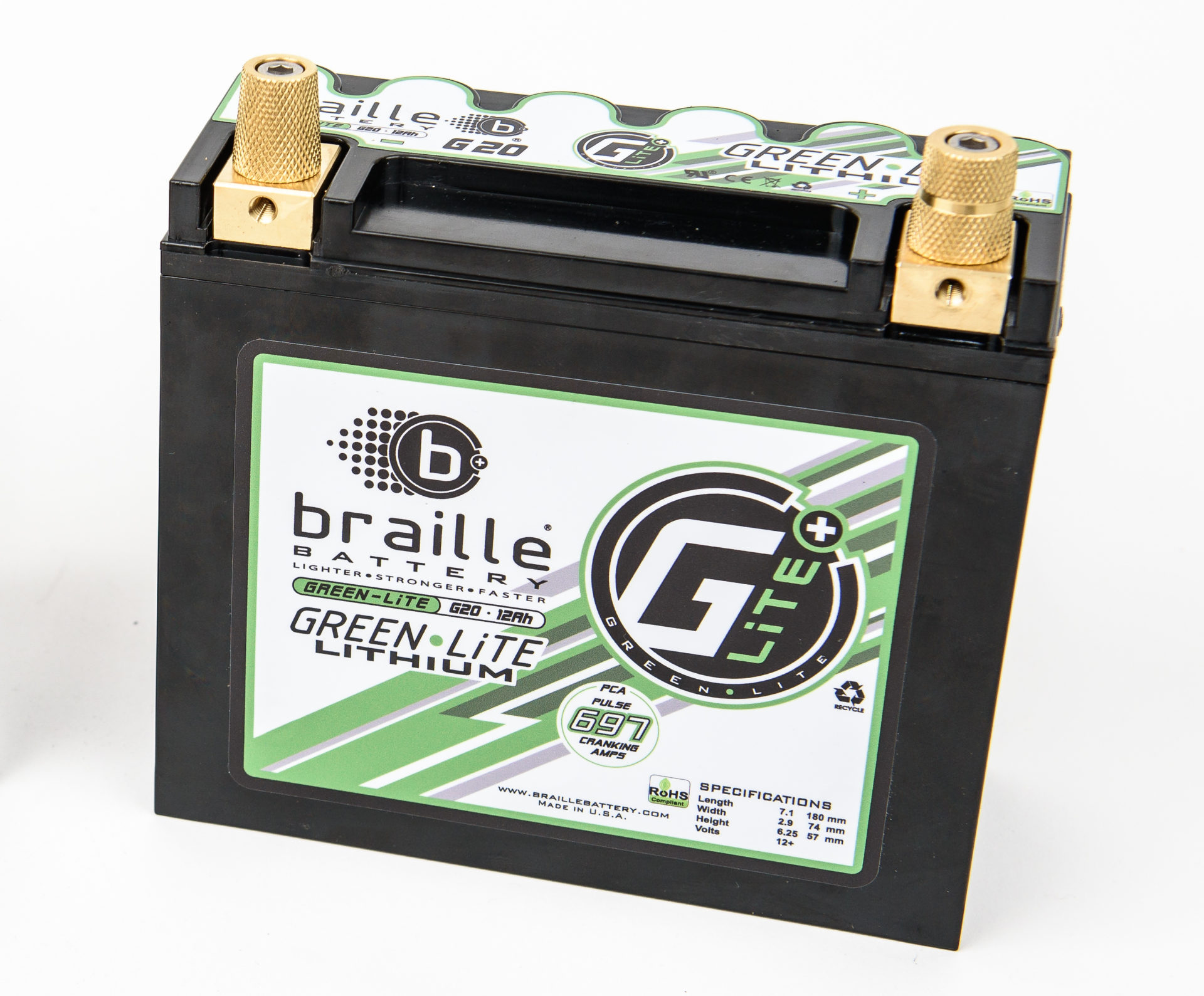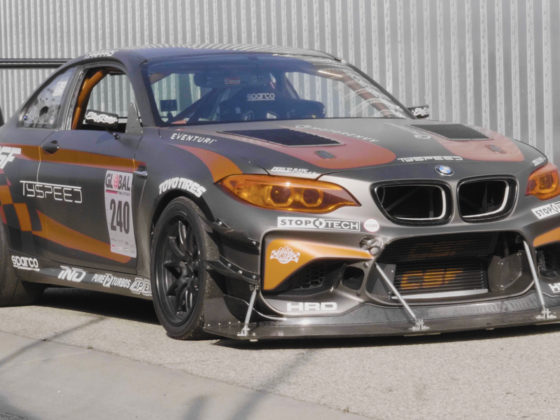
The Braille G20 was a little taller than our older AGM Braille battery. We could still use the same Braille battery mount but we had to use some spacers to get it to fit.

We made up these simple spacers from some aluminum tubing we had laying around the shop.

With the spacers in place, the new G20 battery went right in! It looks like a clean install too!

A very important part of the maintenance of lightweight lithium batteries is to use a proper charger. The wrong charger will at the least damage your battery and at the worst cause an explosion! We used Braille’s own charger to act as a trickle charger as our Evo has a pretty heavy non-operational current draw. The Braille charger is designed to maintain and charge a Braille lithium battery safely with the best charging current pattern for a long life. As we are using it, the Braille charger can also be kept plugged in to keep your battery at its best when your car is stored.
With our new battery, we took advantage of Braille’s newer technology to get a battery with less than half the weight of what we were running and over 35 lbs less weight than stock. Reducing a car’s weight is expensive and using a Braille Lithium battery is a great way to economically reduce a car’s weight and pick up some performance of traditional racing batteries as well. By taking the weight off the front of the car, especially since batteries are usually mounted high in the chassis, using one of these lightweight batteries makes a feel-able difference in a car’s handling, reducing understeer.
So far we are really happy with Braille’s offerings and can recommend them, but don’t just take our word for it. Braille batteries are used in many forms of professional racing. Indy cars, Super GT, V8 Supercars and nearly the entire IMSA field runs Braille batteries.




14 comments
I love the idea of putting a lightweight battery in a sports car but the NA miata uses the battery, spare wheel and jack as counterweight on the rear right corner, and with a 220 pound 6’2 canadian driving like a dickhead it needs all the balance it can get.
Maybe I could remove the power steering and change the battery at the same time.
Well in my opinion excess mass is never a good thing. In the case of the NA, it’s not there to balance the car but since it has to be there, lets put it in the least harmful for balance location. A long time ago we did an article on how battery location affects corner weights. You might want to check it out!
https://motoiq.com/the-hows-and-whys-of-battery-relocation-how-battery-relocation-affects-corner-weight/
I read that article way back when I worked at Mooresport.
Claude Rouelle from Optimum G was chatting about FSAE cars and how students often would get faster by adding weights to balance out the corners even in the acceleration events,
I guess that stuck in my mind.
I never checked the corner weights on the miata anyways, I just noticed that it’s more stable in hard right turns with someone in the passenger seat.
Does Daniel O’Donnell’s project miata still have the stock battery, he probably has a better idea than me about the balance difference?
I don’t believe in adding mass EVER unless the car is too light and you need to ballast for rules compliance. Then you put it in smart places. Usually, a bespoke car like an FSAE racer can be designed with good corner weights!
How does this compare to the antigravity battery used in the Cayman?
The Cayman battery has the restart feature and is bigger, heavier with more capacity, not a direct comparison.
All I can say is keep a close eye on this. I had this exact battery and charger combo and the battery exploded while the charger was connected to it. Luckily it didn’t cause too much damage but a couple inches in one direction and it would have destroyed several thousand $ in Motec electronics. The worst part was I couldn’t get Braille to respond to me when I tried to bring it to their attention (multiple times). I switched to Antigravity and it’s been much more reliable.
Was your battery close to fully discharged? Was the car running and on the charger at the same time?
The car wasn’t running, it happened overnight while it was sitting in the shop. It had just started the car a couple days prior so I highly doubt it was almost fully discharged. Before the charger was hooked up, it didn’t have enough charge to start the engine over but it would power up the electronics. I know lithium batteries can be finicky and this isn’t super uncommon, I’m mostly disappointed in their total lack of response.
Sounds like you a bad cell if the car was dead after only a few days. I’ve seen it too many times in R/C racing, especially with cheap battery packs. If one cell goes bad it’ll drain the entire pack and act like a giant resistor. When you recharge it, it overheats. A good battery will have a vent designed specifically to relieve any pressure buildup and prevent a catastrophic explosion.
I’ve always been wary of Li-Po batteries in street cars due to the messes I’ve seen in R/C racing. I’m planning to use an Li-Fe battery for the Cappuccino in the near future to prevent a lot of the charge/discharge concerns of a Li-Po. The Cappuccino’s battery is so small the weight penalty is only a pound or so, so it’s well worth it to go with the slightly heavier, safer option for a car that sits a lot.
More than a few days, like two to three weeks.
Very clean install, working on the same thing with my car now. What gauge wire did you use for the positive terminal?
OO
I didn’t know that old batteries were heavier. I need to get a new battery for my car. I’ll have to consider getting a battery that can last at least 5 years.